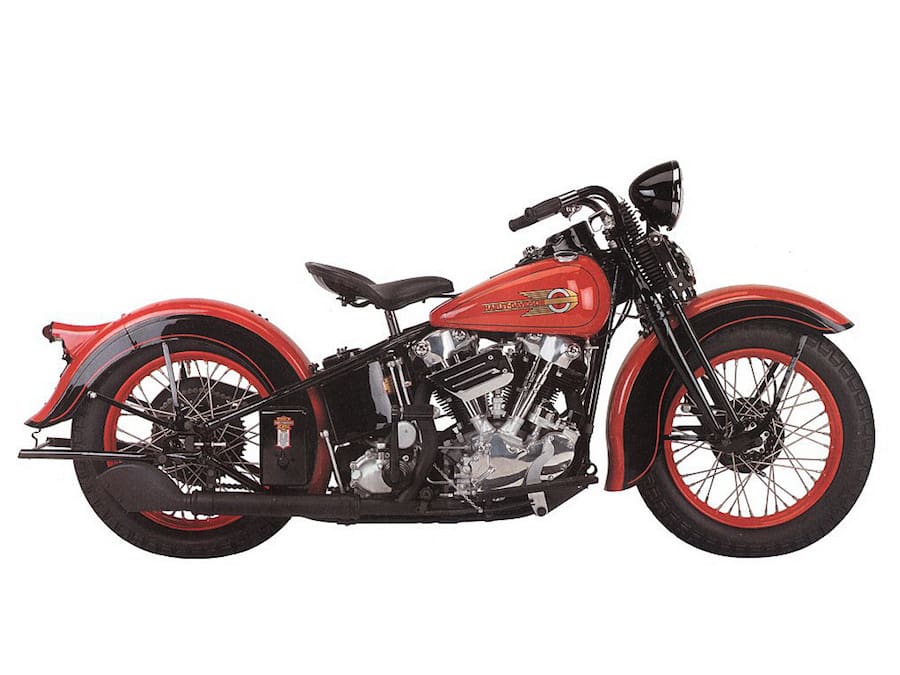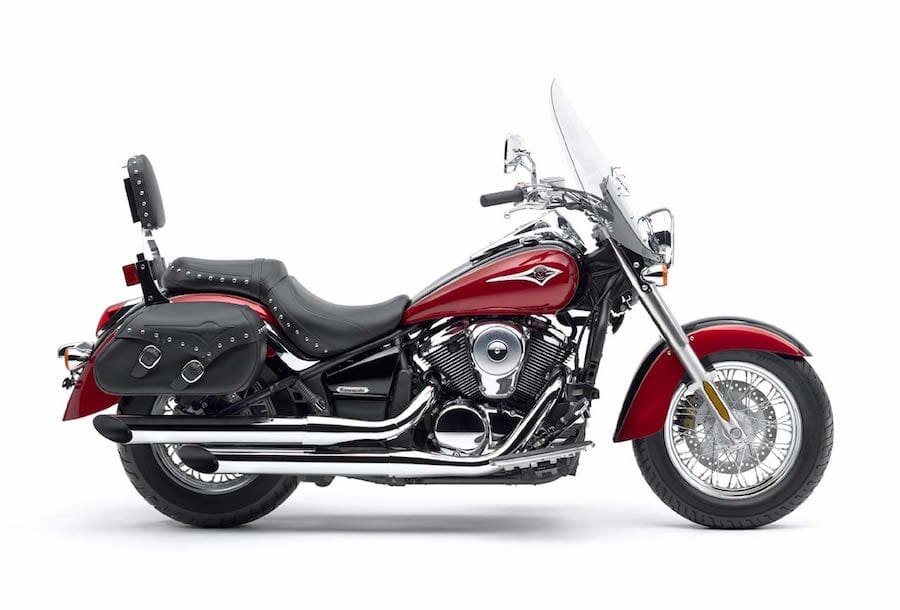In TERMS OF style, general layout and size, the VN1500 Classic could realistically be likened to a Harley Super Glide, and it’s a good match for the H-D’s quality, specification and performance. But price, not so much – it’s heaps more affordable than the big American.
Still, if you’re considering buying a Kawasaki (or any other brand of non-American cruiser), it should be because you really want one, not because you can’t yet afford a Harley or Victory or Indian. If you go for a ‘metric’ cruiser with your heart still set on an American bike, you’ll never bond properly with it, nor will you fully appreciate its charms.
The VN1500 is a well-engineered big motorcycle with plenty of visual presence and lots of styling attitude. The quality of its paintwork and gleaming chrome and alloy is excellent. It’s powered by a 1470cc V-twin making a healthy 51kW; if you have diplomatic immunity you’ll find that’s more than enough power to produce a relaxed highway cruising speed at around 140km/h.
Despite being a substantial bike, the Vulcan carries its 292kg dry weight quite low, making it surprisingly manageable. It can be a handful when executing walking-pace U-turns in narrow streets, but once you get rolling properly it’s fine. The low seat height of about 740mm makes the bike accessible to more or less all comers. The seat is also super comfortable.
There’s heaps of impressive torque from the four-valves-per-cylinder engine – it pulls like a locomotive. Throttle response and overall engine fuelling is smooth and linear in the carby-fed models (from 1996-2001) and the subsequent fuel-injected versions alike. All controls are fine to use.
The heel-and-toe gear-change set-up might seem strange at first but you soon adapt, as you do to achieving smooth, clean gear changes through not rushing things. Early bikes have four-speed ’boxes (which are just fine with all that torque); these were replaced in 1998 by five-speeders.
If you’re used to sportsbike brakes you’ll be underwhelmed by the single-disc front brake, which takes a big squeeze to get a decent response. This is typical cruiser fare and, as always on these bikes, you back it up with enthusiastic use of the back brake.
The suspension is cruiser soft so it’s not happy on rough roads, but overall it makes for competent handling and is quite stable at high speeds. Cruisers with their raked-out front ends are inherently slow steerers, but once you give a strong message through the ’bars they tip in convincingly and hold a nice line through a corner (provided of course that you’ve taken the limited cornering clearance into account).
Safe touring range from the 16-litre tank is around 210km.
Apart from the Classic, there are a number of VN1500 variants: the basic 1500L; the Nomad tourer with screen and panniers; the retro Drifter (a 1940s Indian Chief lookalike); and the sportier Mean Streak, Kawasaki’s apparent response to the Harley V-Rod. For perhaps $1000 more than a Classic, the Mean Streak gives more torque and power and a more free-revving character through bigger valves and throttle bodies, and hotter cams. The chassis is improved with a 43mm USD fork, a pair of 320mm front discs with six-piston calipers, a few less kilos and a bit more cornering clearance.
In mid-2003 the Vulcan VN1500 made way for the VN1600 series.
Whether you’re a younger rider after an affordable cruiser or a senior who’s ready to trade off ultimate performance for a big serve of comfort, the VN1500 is well worth a look. Making it work for you is as easy as climbing aboard, tapping into the engine’s plentiful torque reserves and soaking up a smooth, relaxed and vibration-free ride.
BUILDING BRICKS

1936 – Harley-Davidson EL ‘Knucklehead’ model set the style and specification pattern for all of today’s ‘Big Twin’ cruisers.

1986 – The release of the Kawasaki VN750 model marked the brand’s entry into the metric-cruiser category.

1988-89 – Kawasaki’s first VN1500, the Vulcan 88, paved the way for the release of the modern version in 1996.

- Cruzin’ is as much about the back seat as the front, and your girl (or guy!) should be happy here
- In this category you want a low and comfortable seat. Tick. And tick.
- Front end is dominated by the screen and a big chromed headlight
- That single front disc has to work hard to pull up the heavyweight
The Low Down
LOOK FOR
These big Kawasaki cruisers are rugged, bulletproof machines in every way.
Some mechanical noise when the engine is idling is normal.
Inspect paintwork and plating carefully for signs of neglect or damage – snazzy looks are central to the cruiser thing.
A potentially faulty oil-pressure relief valve might be indicated by oil leaks around the oil filter housing.
As always, adjust your offer to cover worn consumables like tyres, steering-head bearings and brake pads, as well as brake rotors close to minimum thickness.
The ideal prospect is a medium-kays example with good service records if possible.
SERVICE HISTORY
Normal servicing on a big Vulcan is easily handled by experienced DIY owners. Access is pretty good to most service items thanks to there being no fairing to get in the way.
The maintenance-free shaft drive and hydraulic valve lifters make the task a lot easier. A bit of specialist help is advisable on fuel-injected models that require attention.
The basic service interval is 6000km, with major services required every 24,000km.
Price guide
New Price
$15,990 (1996)
$18,290 (2003)
Second-Hand
$4800–$6900











